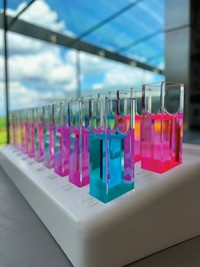Advertisement
Grab your lab coat. Let's get started
Welcome!
Welcome!
Create an account below to get 6 C&EN articles per month, receive newsletters and more - all free.
It seems this is your first time logging in online. Please enter the following information to continue.
As an ACS member you automatically get access to this site. All we need is few more details to create your reading experience.
Not you? Sign in with a different account.
Not you? Sign in with a different account.
ERROR 1
ERROR 1
ERROR 2
ERROR 2
ERROR 2
ERROR 2
ERROR 2
Password and Confirm password must match.
If you have an ACS member number, please enter it here so we can link this account to your membership. (optional)
ERROR 2
ACS values your privacy. By submitting your information, you are gaining access to C&EN and subscribing to our weekly newsletter. We use the information you provide to make your reading experience better, and we will never sell your data to third party members.
Separations
Chemistry In Pictures
Chemistry in Pictures: Why so blue?
by Manny Morone
October 8, 2019

Despite their attractive appearance, these crystals were not Jon Grimm’s desired product. The sample in this test tube was one of the fractions that eluted through a silica gel column that Grimm, a senior scientist in the lab of Luke Lavis at the Howard Hughes Medical Institute’s Janelia Research Campus, used to separate and purify his reaction mixture. Based on the reaction he was running—a Buchwald-Hartwig cross-coupling en route to a fluorescent rhodamine dye, which are used for imaging experiments at Janelia—he thinks the floating crystals are related to the phosphine ligand he added as part of his catalyst, but he did not fully characterize the substance. And although the crystals look like they glow blue, the fluorescence comes mainly from another impurity still in solution; both of which, Grimm assures, drained out of the column far ahead of his expected product.
Submitted by Jon Grimm. This photo is part of our Chromatography Contest sponsored by Restek. Enter the photo contest here, or submit your chromatography photo via Instagram and Twitter using the hashtag #SeparationScene. Follow Grimm on Twitter (@jonathangrimm) and Instagram (@dyerfulchymist).
Do science. Take pictures. Win money. You can also enter our regular monthly photo contest here.
Related C&EN Content:





Join the conversation
Contact the reporter
Submit a Letter to the Editor for publication
Engage with us on Twitter